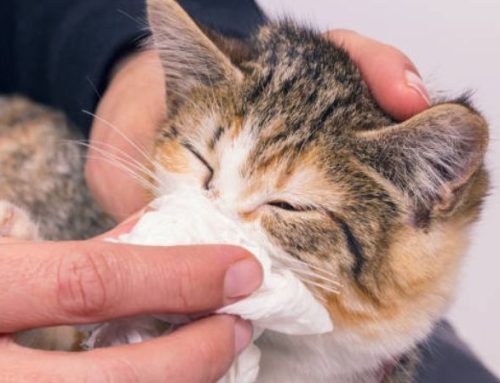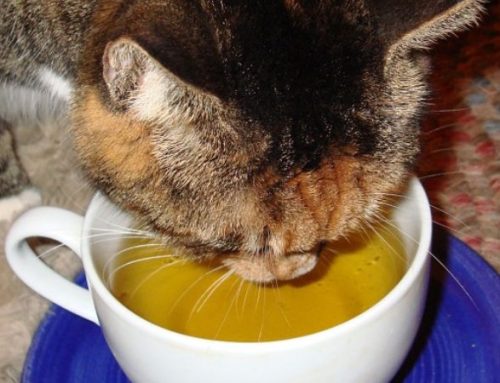Few sights are more frightening for a cat owner than seeing their feline retch blood. Even the most stoic and spirited cats can’t hide serious health issues behind their quiet demeanor, and this symptom is a red flag that demands attention. In this guide, Nexus-pets will walk you through the possible causes, what treatments may be needed, and how to know when it’s time to call the vet.
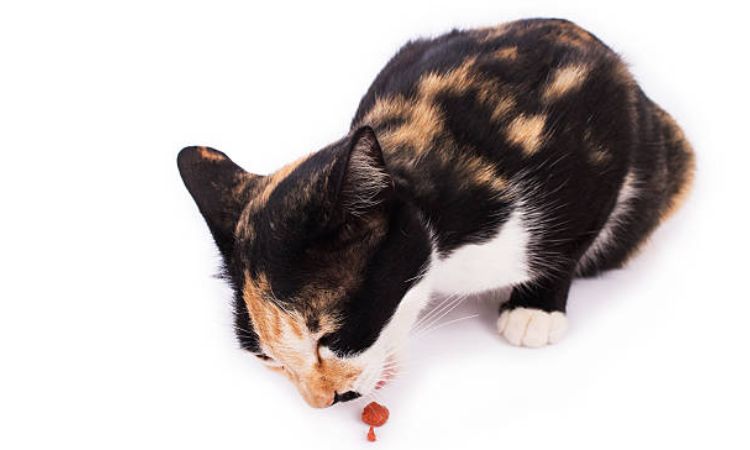
Common Causes of Blood in Cat Vomit
Vomiting blood in cats, also known as hematemesis, can have multiple underlying causes. Understanding these potential factors can help pet owners act quickly and seek appropriate veterinary care.
1. Stomach and Intestinal Issues
Blood in a cat’s vomit often originates from problems within the gastrointestinal tract, such as:
- Gastritis: Inflammation or irritation of the stomach lining that can result from dietary indiscretions, infections, or chronic stress.
- Ulcers: Open sores in the stomach or intestines that can erode blood vessels, leading to vomiting blood. Ulcers may develop due to medications, infections, or underlying health conditions.
- Foreign Object Ingestion: Cats sometimes swallow non-food items, including string, small toys, or other household objects. These can cause internal injuries or blockages, resulting in hematemesis.
2. Trauma or Injury
Physical trauma can lead to internal bleeding and vomiting blood, even if external wounds are not visible:
- Mouth, Throat, or Stomach Injuries: Scratches, punctures, or other damage to the digestive tract can cause bleeding.
- Accidents or Falls: Falls from heights, vehicle collisions, or fights with other animals may result in internal injuries and hematemesis.
3. Toxins and Poisons
Ingesting toxic substances is a significant cause of blood in cat vomit:
- Household Plants: Certain plants, such as lilies and poinsettias, are highly toxic to cats.
- Human Medications: Over-the-counter or prescription medications, including NSAIDs and acetaminophen, can damage the gastrointestinal lining.
- Chemicals and Poisons: Household cleaners, rodenticides, and other toxic substances can induce internal bleeding and vomiting.
4. Infections and Diseases
Several infections or chronic conditions can lead to gastrointestinal bleeding:
- Severe Viral or Bacterial Infections: Diseases such as feline parvovirus (panleukopenia) can damage the stomach and intestines.
- Parasitic Infestations: Worms, such as hookworms or roundworms, can irritate the gastrointestinal tract and cause blood in vomit.
- Liver or Kidney Disease: Compromised liver or kidney function can result in toxin accumulation, damaging the digestive system and causing hematemesis.
5. Cancer and Tumors
Malignant or benign growths can also be responsible for blood in a cat’s vomit:
- Gastrointestinal Cancers: Tumors in the stomach or intestines may erode blood vessels, leading to internal bleeding.
- Throat or Stomach Lining Tumors: Even non-GI tumors located in the digestive tract or surrounding areas can cause hematemesis.
6. Blood-Clotting Disorders
Some conditions affect the cat’s ability to clot blood, increasing the risk of vomiting blood:
- Inherited or Acquired Disorders: Diseases that prevent normal clotting can trigger gastrointestinal bleeding.
- Medication Side Effects: Certain medications, including anticoagulants or NSAIDs, can impair clotting and lead to hematemesis.
Vomiting blood in cats is never normal and can indicate serious, sometimes life-threatening conditions. Immediate veterinary evaluation is essential to determine the cause and begin treatment.
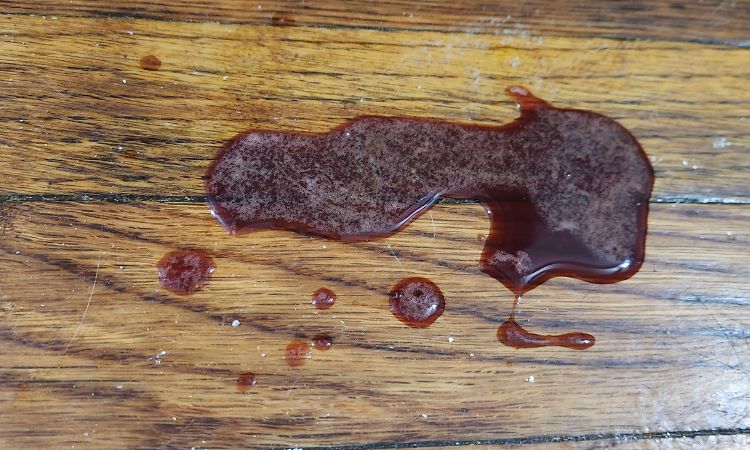
When to Worry: Warning Signs
Vomiting blood in cats is always a red flag, but certain signs indicate a more urgent or life-threatening situation. Pet owners should seek immediate veterinary care if any of the following occur:
- Significant Blood in Vomit: Large volumes of fresh, bright red blood or dark, coffee-ground-like vomit signal serious internal bleeding.
- Repeated Vomiting Episodes: Cats that vomit blood multiple times in a short period, or are unable to keep food or water down, require urgent attention.
- Additional Symptoms of Illness: Lethargy, pale or white gums, unexplained weight loss, or weakness often accompany dangerous internal conditions.
- Respiratory or Circulatory Distress: Difficulty breathing, collapse, or sudden weakness may indicate shock or severe internal injury.
- Immediate Veterinary Intervention: Any of the above signs warrant prompt consultation with a veterinarian. Delaying care can worsen the condition and may be fatal.
Even if your cat appears alert or the vomiting seems mild, it’s always safer to err on the side of caution. Observing these warning signs and acting quickly can make a critical difference in your cat’s recovery.
Treatment Options for Cats Vomiting Blood
When a cat is vomiting blood, prompt veterinary intervention is essential. The treatment approach depends on the severity of the condition and the underlying cause. A veterinarian will typically divide care into three main areas: immediate stabilization, specific treatments based on the cause, and supportive care.
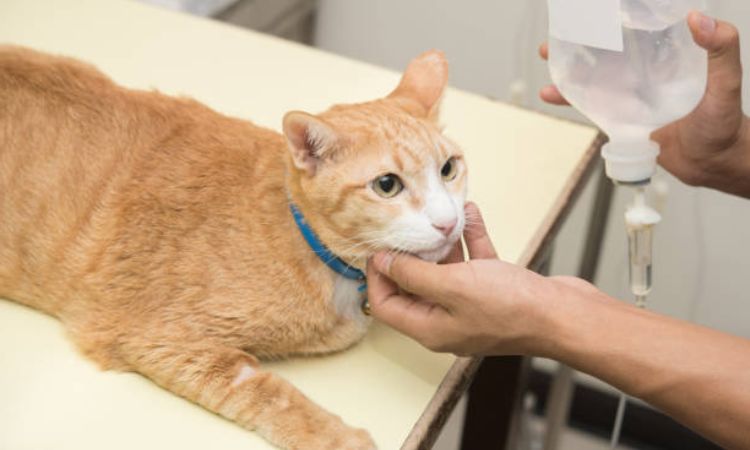
1. Immediate Stabilization
The first priority is to stabilize your cat and prevent further complications:
- Intravenous (IV) fluids: These help treat dehydration caused by vomiting and restore essential electrolytes.
- Blood transfusions: In cases of significant blood loss or severe anemia, a transfusion may be required to stabilize the cat.
Stabilization ensures the cat is strong enough to undergo further diagnostic testing or treatments.
2. Specific Treatments Based on Cause
Once stabilized, treatment targets the underlying reason for vomiting blood:
- Medications:
- Antacids or acid-reducing drugs (e.g., famotidine, omeprazole) to heal stomach ulcers or reduce irritation.
- Antibiotics or anti-parasitic drugs for infections or parasitic infestations that may be causing GI bleeding.
- Surgery: Required if a foreign object, tumor, or internal injury is causing obstruction or bleeding.
- Antidotes or detoxification: In cases of poisoning or toxin ingestion, specific treatments such as vitamin K (for anticoagulant rodenticide) or other detoxifying agents may be administered.
The choice of treatment is tailored to the exact cause identified by diagnostic tests such as blood work, X-rays, ultrasound, or endoscopy.
3. Supportive Care and Home Management
After initial treatment, ongoing supportive care helps your cat recover fully:
- Dietary adjustments: Special diets may be recommended to soothe the gastrointestinal tract, reduce inflammation, or manage chronic conditions like IBD.
- Hydration monitoring: Ensure your cat continues to drink water and remains well-hydrated. In some cases, supplemental fluids at home may be advised.
- Follow-up veterinary visits: Regular check-ups allow the vet to monitor healing, adjust medications, and prevent recurrence.
Providing attentive supportive care alongside medical treatment significantly improves recovery outcomes and reduces the risk of future episodes.
Preventing Vomiting Blood in Cats
While not every cause of bloody vomit can be prevented, there are several proactive steps you can take to reduce your cat’s risk and keep them healthy:
- Keep Toxic Substances Out of Reach: Many household items, plants, and chemicals can be dangerous to cats. Common hazards include lilies, poinsettias, antifreeze, rat poison, and certain human medications such as NSAIDs or aspirin. Ensure all toxic plants, chemicals, and potentially harmful foods are stored safely away from your cat’s reach.
- Maintain Routine Veterinary Care: Regular check-ups help detect health issues early, from kidney or liver disease to gastrointestinal problems. Routine vaccinations, parasite prevention, and deworming are essential for preventing infections and infestations that can lead to vomiting blood.
- Create a Safe Environment: Cats are naturally curious and active, so minimizing the risk of trauma is crucial. Prevent falls, keep your cat indoors or supervise outdoor access, and remove hazards like sharp objects or small items they could swallow. Reducing accidents lowers the likelihood of injuries that could cause internal bleeding.
Never give your cat human medications unless prescribed by a veterinarian. Certain drugs, even over-the-counter pain relievers, can cause ulcers, bleeding, or toxicity. Similarly, avoid feeding unsafe foods or table scraps that may irritate the digestive tract or cause poisoning.
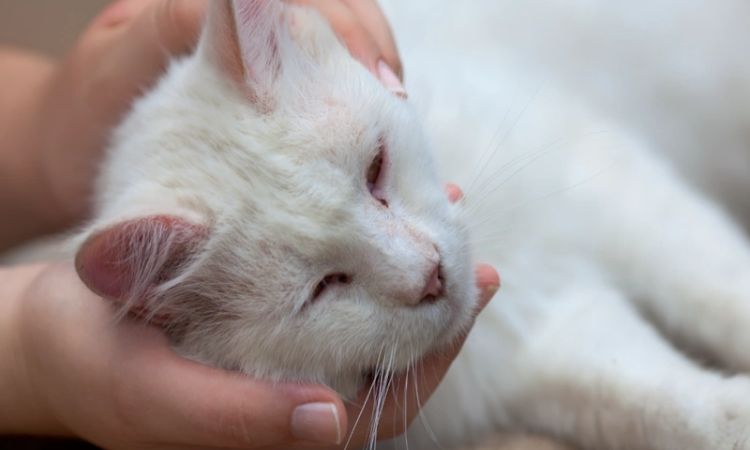
Vomiting blood is a clear signal that something is seriously wrong with your cat. It’s a symptom that demands immediate veterinary attention, not a condition to be treated at home. While this outline covers common causes and treatments, only a qualified veterinarian can provide a proper diagnosis and the life-saving care your pet needs. Acting quickly is the most important step you can take to ensure your cat has the best chance for a full recovery.


